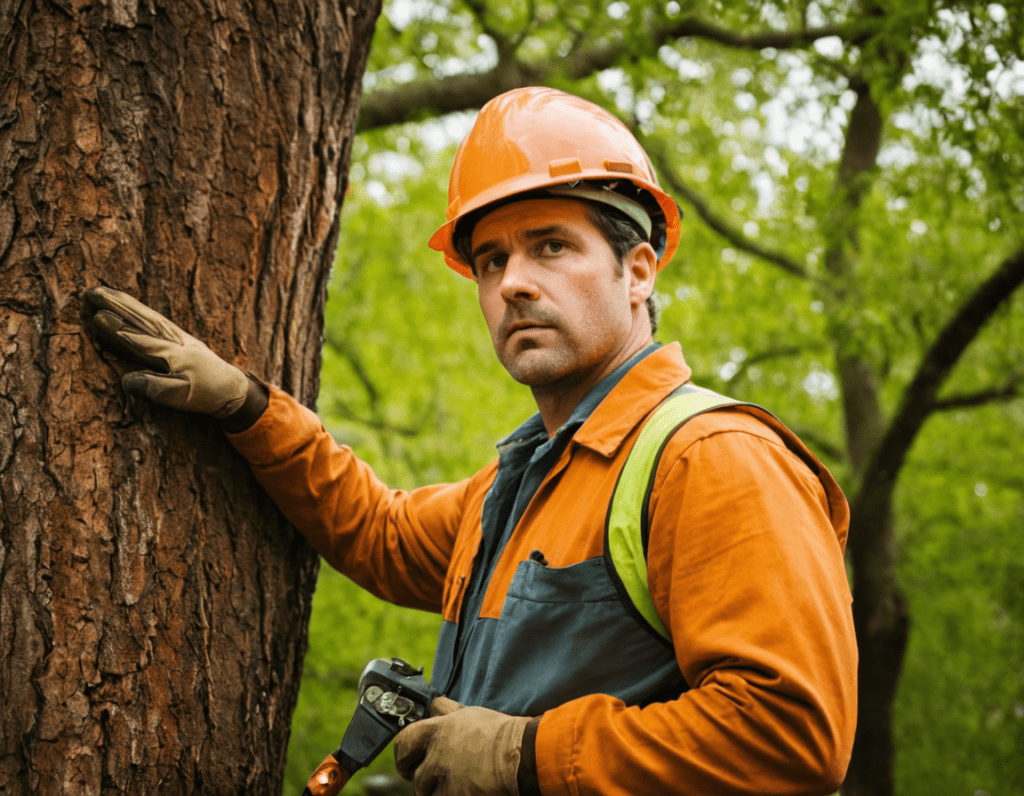Harry Patterson
The Noble Tribune
In a bold move that is shaking the very foundation of the outdoor recreational community, a coalition of arborists has proposed a nationwide helmet mandate for anyone stepping foot near trees. The initiative comes in the wake of an alarming rise in tree-related injuries, leading experts to claim that the current lack of head protection is simply “asking for trouble.”
Dr. Maple Thorndale, a renowned arborist and spokesperson for the newly formed “Safe Canopy Initiative,” said in a recent press conference, “It’s a crisis, really. You wouldn’t walk around a construction site without a helmet, would you? Well, we have trees—giant, unpredictable forces of nature. And people are just strolling through forests like it’s a walk in the park. We can’t stand by and watch this any longer.”
The proposal suggests that everyone—from casual hikers to professional lumberjacks—should wear helmets at all times while in proximity to trees. “It’s about safety,” said Dr. Thorndale. “A simple fall from a branch can lead to catastrophic injury—head trauma, concussions, even the occasional unfortunate splinter to the scalp.”

The movement has gained considerable momentum, with some states already implementing voluntary helmet use in high-risk tree zones, such as popular hiking trails and suburban parks. In response, helmet manufacturers are scrambling to develop new, tree-specific designs, with some early prototypes featuring extra padding, a reinforced chinstrap, and a built-in tree branch deflector.
However, not everyone is on board with the new mandate. Critics argue that the proposal is excessive and an overreaction to what is largely an isolated problem. “Look, I get that trees are dangerous, but this is ridiculous,” said Dan Rivers, an outspoken member of the “Helmet-Free Hikers” advocacy group. “The last time I checked, tree climbing wasn’t an extreme sport, and if you’re worried about falling, maybe you shouldn’t be climbing trees in the first place.”
Despite the backlash, the movement has gathered significant support in the medical community. Dr. Sycamore Greenleaf, a neurologist with a special focus on outdoor injuries, has endorsed the initiative, citing data from recent studies that show a concerning rise in head injuries caused by unexpected tree falls. “It’s not just the falls themselves—it’s the branches, the sap, the pesky squirrels that launch surprise attacks. People don’t realize how dangerous it is to be near a tree until it’s too late.”

While many are still trying to wrap their heads around the idea of a nation of tree-wearers, one thing is clear: the age of unprotected tree proximity is over. Whether you’re a professional arborist, a casual stargazer, or just someone trying to take a picture of a really nice oak, you may want to start shopping for your first helmet.
And as for the trees? Well, experts say they’re likely just relieved to know that someone is finally taking them seriously.
Stay tuned for more updates on the latest arboreal safety initiatives—who knows, next we might be seeing mandatory knee pads for sidewalk walking.
